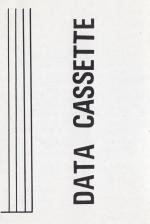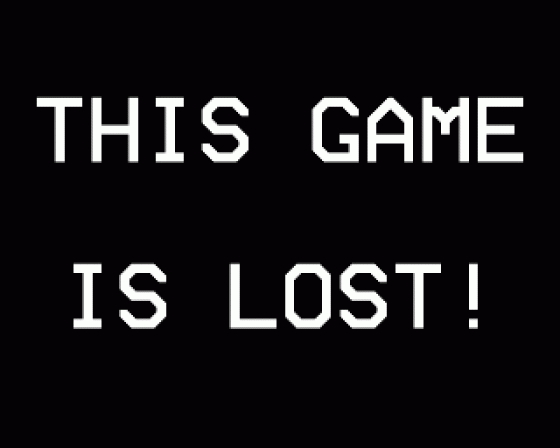
A&B Computing
 1st July 1984
1st July 1984
Categories: Review: Software
Publisher: Micro Aid
Machine: BBC Model B
Published in A&B Computing 1.08
Micro-Aid have packaged some of their Basic games into one compilation at an attractive price. We have done them the honour of reviewing each game on its own merits.
Battle
This is a game for one player, who has to move from the bottom left of a 10 x 10 grid to the top right, or the "Home Base", using the cursor keys, avoiding mines on your way. These mines cannot be seen but you are told how many mines are around you each move, but this facility only lasts for the first twenty moves: after this, you are completely unaided, but the score for each move increases accordingly. A time limit is imposed on the game, a bonus being gained for completion of the course in under a minute, but you are blown up, and your score halved if you take over two minutes.
Other methods of deleting your score include trying to walk off the edge, which knocks off fifty points, or hitting one of the non-explosive obstacles, which leaves you dazed, and 100 points poorer. When the game is first loaded, a union jack is drawn, and your computer goes into a very tuneless hammering of machine funs and other non-laser weaponry. If you fail to press "N" within a couple of seconds, the instructons are then displayed, and these are followed by the game proper. The grid is drawn and you are shown as a very insignificant little man perched in the bottom left corner. The time is shown ticking away together with the number of mines around you at that particular time.
To sum up, this is a very simple game, written in Basic, and consequently, it is nothing spectacular. I would not recommend this game, as it does not make any attempt to stand up to the competition that it is given by other strategy games, such as adventures, or role-playing games of the Kingdom genrae.
Darts
It took me about half an hour to work out what this program was supposed to do. When I finally did, I wished that I hadn't bothered. This is one of the poorest excuses for a piece of software I have seen in a long time...
When you first load Darts, a very pretty high resolution multi-coloured darts board is drawn up, and you are asked whether you play the "no bust" rule. My knowledge of the technical side of the game being somewhat limited to say the least. I resolved to say Yes and hope for the best! This I did, and the program seemed to work OK. Then comes the real fun. The computer asks you what standard of player you are, on a scale from 1 to 100. I entered 1 (as I usually do on new games, being of a cowardly disposition), and on completing the rest of the questions which consisted of start number (301, 501, etc) do you want to play a double to start, and do you want to go first (stupid question!), I expected to see some form of representation of an arrow on screen. No such luck! The computer asked what I had scored!!!! I switched off the machine, turned off my graphics ROM and re-ran the program, thinking that it must use machine code, and the ROM upsets it, as it does some other programs. Exactly the same procedure followed.
Then it finally clicked. This was a darts "practice" program, and you were supposed to actually have a dart board pinned up on your wall opposite your computer, and sit there throwing your darts, entering your score and waiting to see what random number your computerised opponent could come up with. To be fair, the program doesn't just use random numbers. It does give quite an accurate response depending on what skill level you put in. The computer misses the board more often than not on the lower levels. I would hate to see the walls in the programmer's house!
To sum up, this program is really not what one would expect to see in this day and age. I would not expect to see this kind of software published for the ZX81, let alone a machine with a reputation like the BBC Micro! The high-res board is very pretty but it serves no purpose whatsoever, apart from making the screen display look a little more pleasant.
Please, Micro-Aid, take this tripe off the market!
Cards
This is a computerised version of the game played on the TV series "Play Your Cards Right". The object of the game is to guess whether the next card is going to be higher or lower than the previous one. If you manage to do this correctly for five turns of the cards, you have managed to win a game! When I first run this game, I expected to see a graphic Bruce Forsyth, or at least his chin jutting out of the screen in 3D. No such luck, however, but the instructions supplied were short and clear, and after a short musical gurgle, the game begins.
The screen display shows graphically the cards that you have. Kings, Queens and Jacks have the words written on them, and not the actual pictures. At the bottom of the screen the computer tells you how many cards you have turned over in total, and at the top, it gives you an indication of how many games you have both won and lost. If you guess incorrectly, a buzzing noise greets your ears, but if you win, the computer plays the most tasteless "tune" I have ever heard! It really makes you cringe. It's the musical equivalent of someone scraping their fingernails down a blackboard. After five games, the screen clears, and you are told how many games you have won, and how many you have played in total.
This is one of Micro-Aid's better games, and can be quite good fun to play. The graphics could be improved, however, by, say drawing the cards face down first, and then "turning them over". All in all though, this is an enjoyable game, and, together with the lack of Bruce Forsyth, makes an interesting change from watching the TV series.
Pontoon
This is yet another version of the old card game pontoon or Blackjack. For those who have only just landed on this planet, there is a short rundown of how you play the game... The object of the game is to get 21, or below 21 as close as possible. You can either twist or pass, i.e. take another card from the dealer, or "Stick", staying with the cards that you have in your hand at that time.
The computerised version of the game consists of you, the player, and the computer, who acts as the dealer. The customary two cards are dealt to begin with, and the game begins. The cards are displayed graphically, and you choose whether to twist or pass by pressing the keys "1" or "2" respectively. When you have finished playing (or if you "bust") the computer takes its turn, and invariably wins. The score is shown as games won by the player, and games won by the computer.
There is no sound in the game apart from something that sounds rather like indigestion at the very beginning. The graphics for the cards display is average, but by no means is it anything spectacular. There is no provision in the game for buying cards instead of twisting, nor does the game give yoou the true "betting" feeling by giving you an amount of money with which to play. To sum up, this game is, quite simply, average. It does not make any effort to compete with Superior Software's or A&B's game of the same name, and I would not recommend this game to anyone except the absolute card games fanatic.
Mrmidon
Mrmidon sounds rather a peculiar name for a game. In fact, the blurb in the instructions relates that the Mrmidon is, in fact, a mythical creature that lives on an island consisting of a 12x12 grid.
The object of the game is to capture the Mrmidon. This is done by preventing it from being able to move. At the start of the game, you are shown where the Mrmidon is, but after your first move, the creature becomes invisible, just to add a little excitement to the game. You are given twelve men, placed at random positions on the grid, and you are allowed to move any two of them a maximum of three positions each. Then, the Mrmidon moves, then you, and so on. You must capture the Mrmidon within 36 moves. Normally, the Mrmidon moves up, down, left or right into an empty space, but he will move diagonally onto a space occupied by one of your men, and enjoy a quiet snack. This can be quite a useful way of dining out where the Mrmidon is. Every fifth move, an extra man is added to your forces, and you are asked whereabouts on the board you would like to put him.
The game was supplied on disc, together with a number of other programs for review. When I first selected the program, I read the instructions, but when it came to moving a man, the program crashed. This was found to be due to a memory shortage, as I had the Disc Filing System installed. This sort of bug is totally inexcusable when the program is actually supplied on disc. However, the addition of a small relocating program at the beginning soon righted this wrong.
The game itself is not terribly interesting, and I found that it could not hold me at the keyboard for as long as most of the software that I had. However, the game would be very useful for schools who were doing a project on co-ordinates, and I would imagine that younger children would enjoy planning out the moves. I would not, therefore, recommend this program to home users, as there are many tactical programs on the market which far surpass the quality of this, and which provide much greater value for money.
Scores
BBC Model B Version| Sound | 40% |
| Graphics | 50% |
| Documentation | 50% |
| Value For Money | 60% |
| Overall | 45% |



